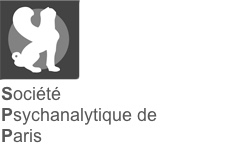|
Abstract:
|
Infants express emotional distress through whining, crying, flailing, silence, etc., which can be viewed as communications that also afflict the caregiver(s). One expressive mode, subtle and often unnoticed except by the parents, is infant gaze avoidance. It often elicits parental feelings of rejection, shame and despair, and may be a reason for seeking parent-infant psychotherapy. In therapy, the symptom often discloses a disturbance in the dyad’s emotional interaction. Therapy can bring about relief in the symptom and the relational disorder. Sometimes, the therapist discovers that the infant is avoiding the therapist’s, rather than the parents’, eyes. This challenges the therapist’s expertise in establishing contact with the baby and in perceiving and processing emotional reactions to what may be experienced as the baby’s dismissal. Gaze avoidance elicits theoretical questions approached in a previous publication: what does the child seem to avoid in the adult’s eyes, and how can we conceptualize the psychodynamics behind the symptom? It also evokes technical questions: how can the therapist make contact with an infant who avoids the mother’s or the therapist’s eyes? How can the clinician exploit their emotional reactions, the countertransference, to understand and further the dyad’s emotional communication? Two case vignettes are provided.
|




